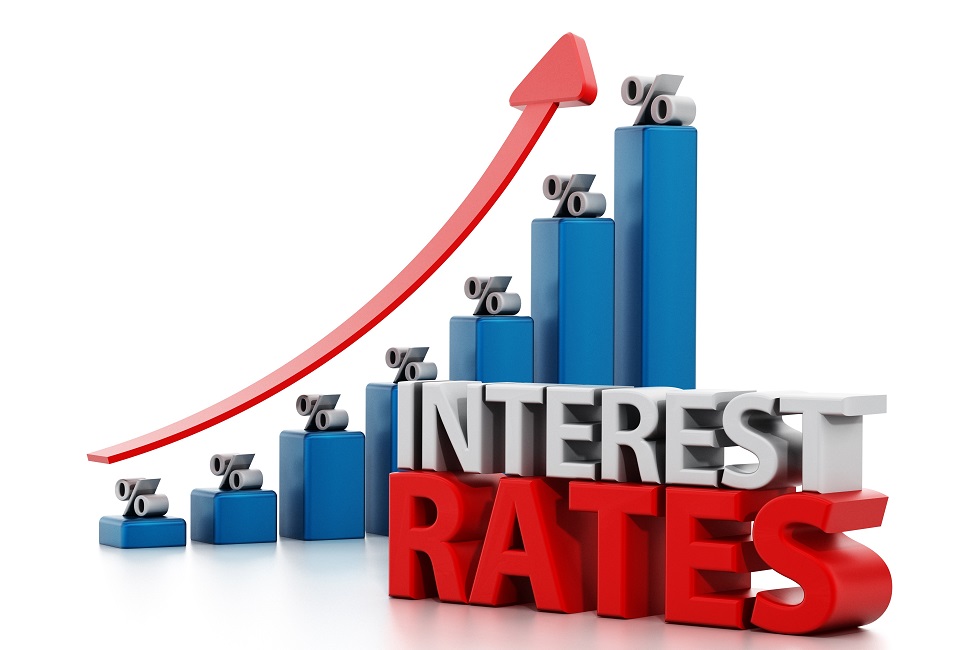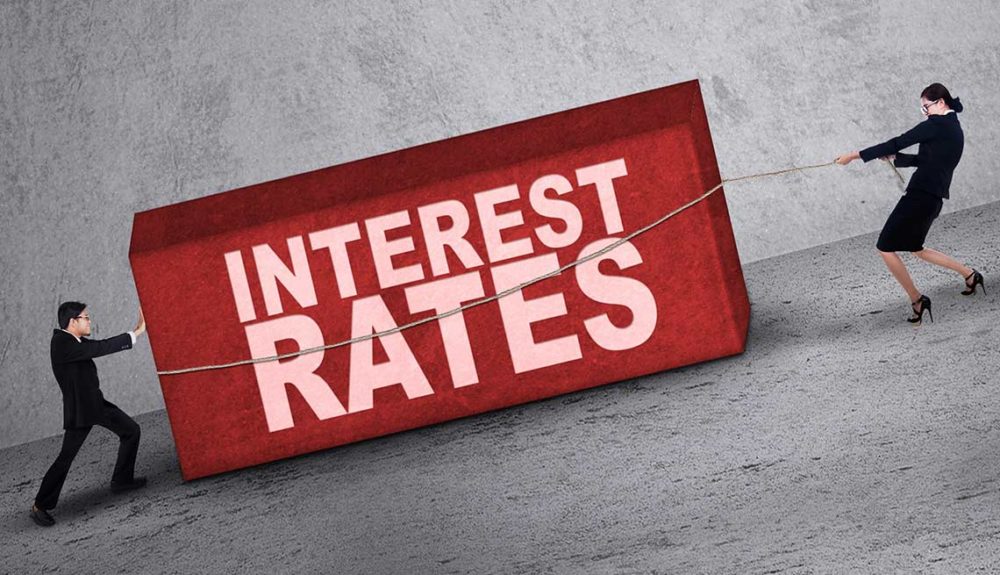“Unraveling the World of Interest Rates: A Deep Dive into Borrowing, Lending, and Economic Impact
In the intricate web of finance, interest rates play a pivotal role, influencing everything from borrowing costs to savings account earnings. Understanding the dynamics of interest rates is essential for both individuals and businesses navigating the complex landscape of loans, investments, and economic fluctuations. In this comprehensive guide, we’ll explore the various facets of interest rates, their applications, and the broader economic implications they entail.

1. The Basics of Interest Rates: A Borrower’s Dilemma
Defining Interest Rates: Interest rates represent the cost of borrowing money, expressed as a percentage of the principal amount loaned. Whether it’s a mortgage, personal loan, or business financing, interest rates are a key determinant of the overall expense for the borrower.
Interest Rates in Savings: On the flip side, interest rates also apply to savings accounts and certificates of deposit (CDs), where account holders earn interest on their deposited funds. The Annual Percentage Yield (APY) reflects the interest earned on these accounts, emphasizing the dual nature of interest rates in the financial ecosystem.
2. Understanding the Cost of Money: Interest Rates in Lending
Cost of Borrowing: Interest rates act as the “cost of money” for borrowers. Higher interest rates translate to more expensive loans, impacting various aspects of individuals’ and businesses’ financial decisions.
Risk Assessment: Lenders assess risk when determining interest rates, with a borrower’s credit score playing a crucial role. Low-risk borrowers are offered lower interest rates, while high-risk borrowers face higher rates, reflecting the lender’s compensation for the perceived risk.
Simple Interest Rate: A simple interest rate is calculated annually based on the principal amount borrowed. For example, a $300,000 loan with a 4% annual interest rate would result in a $12,000 interest payment for the year.
Compound Interest Rate: Some lenders prefer compound interest, applying interest not only to the principal but also to previously accumulated interest. This method results in higher overall interest payments over time, particularly with longer-term loans.
3. Compound Interest and Savings: A Double-Edged Sword
Compound Interest Formula: The compound interest formula incorporates both the principal and the number of compounding periods. Over time, this method can significantly increase the total interest owed, as demonstrated by a $300,000 loan accumulating nearly $700,000 in interest over 30 years at a 4% interest rate.
Savings Account Benefits: Conversely, compound interest works in favor of savers, as interest earned on savings accounts is compounded. This provides compensation to account holders for allowing banks to utilize their deposited funds.
4. Borrower’s Cost of Debt: Navigating Interest Rates Strategically
Cost-Benefit Analysis: Interest rates represent both interest income to lenders and a cost of debt to borrowers. Companies strategically weigh the cost of borrowing against the cost of equity, considering factors such as dividend payments, to determine the optimal capital structure.
APR vs. APY: Consumer loans quote interest rates as the Annual Percentage Rate (APR), representing the rate of return demanded by lenders. In contrast, the Annual Percentage Yield (APY) factors in compounding and is applicable to interest earned on savings accounts or CDs.
5. Interest Rates in the Macro Economy: Tools for Economic Stimulus and Control
Central Banks and Interest Rates: Central banks, such as the Federal Reserve, utilize interest rates as a monetary policy tool. By adjusting interest rates, they influence borrowing costs for commercial banks, subsequently impacting personal loans, business loans, and mortgages. This, in turn, stimulates or cools off economic activity.
Economic Implications: Interest rates play a crucial role in shaping economic conditions. High-interest rates can discourage borrowing, leading to reduced consumer demand and limited access to capital for businesses. Conversely, low-interest rates stimulate spending, investment, and economic expansion, albeit with the risk of inflation.
6. Interest Rates and Discrimination: A Lingering Challenge
Systemic Racism in Lending: Despite legal safeguards, discriminatory lending practices persist, particularly affecting homebuyers in predominantly Black communities. Higher interest rates imposed on these communities contribute to increased interest payments over the life of loans, exacerbating economic disparities.
Regulatory Initiatives: Efforts to address discrimination include regulations like the Equal Credit Opportunity Act (ECOA). However, the need for clear standards and effective enforcement is highlighted to ensure nondiscriminatory access to credit.
7. Interest Rate Dynamics: Bonds, Fed Policy, and Economic Responses
Bond Prices and Interest Rates: Bonds, as debt instruments, react inversely to changes in interest rates. When prevailing interest rates rise, existing bonds with lower coupon rates may sell at a discount. Conversely, in a low-interest-rate environment, existing bonds with higher coupon rates become more attractive.
Fed’s Role in Economic Stabilization: The Federal Reserve’s use of interest rates as a tool for economic stabilization is evident. By adjusting rates, the Fed aims to control inflation, stimulate economic growth during low-interest periods, or cool down an overheated economy with high-interest rates.
Impact on Borrowing Choices: Understanding the interplay between interest rates and economic conditions helps individuals and businesses make informed borrowing and investment decisions. Whether choosing between short-term or long-term loans, the prevailing interest rate environment guides these choices.
interest rates are a fundamental aspect of finance, influencing both borrowers and savers while serving as a key instrument for economic management. Navigating the complexities of interest rates requires a nuanced understanding of various factors, including risk assessment, compounding effects, and economic policies. As we move forward, staying informed about interest rate trends and their broader implications empowers individuals and businesses to make sound financial decisions in an ever-evolving economic landscape.
8. Interest Rates in Real Estate: A Crucial Factor in Homeownership
Home Equity Dynamics: Home equity, a form of wealth for homeowners, is the difference between the property’s current market value and the outstanding mortgage amount. As property values increase and mortgages are paid down, homeowners build equity, providing financial flexibility.
Home Equity Loans and Lines of Credit: Homeowners can leverage their accumulated equity through loans or lines of credit. These financial tools allow individuals to access funds for various purposes, from home improvements to debt consolidation, using their home equity as collateral.
Impact of Interest Rates on Real Estate: Fluctuations in interest rates significantly impact the real estate market. Lower interest rates often lead to increased demand for homes, driving up property prices. Conversely, higher interest rates can deter potential buyers, potentially causing a slowdown in the real estate market.
9. Technology and Interest Rates: Shaping the Future of Finance
Fintech Innovations: The intersection of technology and finance, commonly known as fintech, is reshaping the financial industry. Fintech companies leverage advanced algorithms, data analytics, and digital platforms to streamline lending processes, offering competitive interest rates and personalized financial solutions.
Blockchain and Peer-to-Peer Lending: Blockchain technology is disrupting traditional lending models through decentralized finance (DeFi). Peer-to-peer lending platforms powered by blockchain enable direct transactions between borrowers and lenders, reducing the need for intermediaries and potentially influencing interest rate dynamics.
AI-Powered Risk Assessment: Artificial Intelligence (AI) plays a pivotal role in risk assessment for lenders. Advanced algorithms analyze vast datasets to evaluate borrower risk, contributing to more accurate interest rate determinations. This data-driven approach enhances efficiency and fairness in the lending process.
10. Climate Change and Green Finance: Emerging Factors in Interest Rate Considerations
Green Bonds and Sustainable Finance: The growing awareness of climate change has prompted the development of green finance instruments, such as green bonds. These bonds fund environmentally sustainable projects, and their success may influence interest rate considerations as investors prioritize sustainable and ethical investments.
Interest Rate Adjustments for Environmental Impact: Central banks and financial institutions are increasingly incorporating environmental factors into their decision-making processes. Interest rate adjustments based on a company’s environmental practices or commitment to sustainability may become a reality, aligning financial policies with global efforts to combat climate change.
11. The Future Landscape of Interest Rates: Adapting to Change
Dynamic Economic Conditions: As economies evolve, interest rates will continue to respond to dynamic conditions. Understanding the factors that influence rate changes, including technological advancements, societal shifts, and environmental considerations, is crucial for individuals and businesses navigating the financial landscape.
Adapting Financial Strategies: Individuals and businesses alike must remain agile in adapting financial strategies to changing interest rate environments. Proactively monitoring trends, leveraging technological advancements, and considering sustainability factors will be integral to making informed financial decisions in the future.
Navigating the Ever-Changing Terrain of Interest Rates
Interest rates, at the core of financial systems, weave through the intricate fabric of borrowing, lending, and economic dynamics. From the fundamental principles of simple and compound interest to the far-reaching impact on real estate, technology, and environmental considerations, interest rates are a compass guiding financial decisions.
As we venture into the future, staying informed, embracing technological innovations, and recognizing the evolving landscape of sustainability will be paramount. The ability to adapt financial strategies to the ever-changing terrain of interest rates ensures that individuals and businesses can navigate challenges and seize opportunities in the dynamic world of finance.






